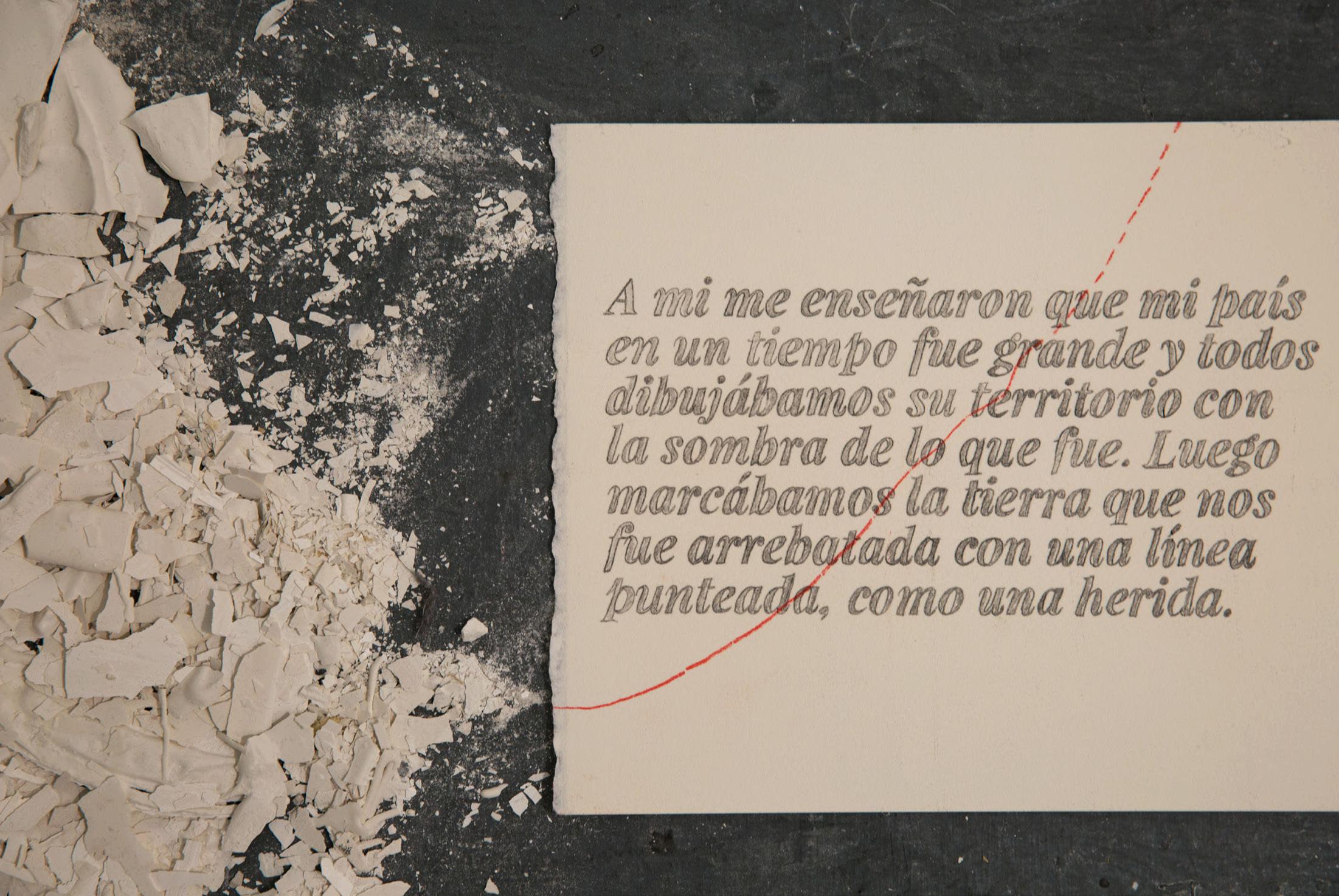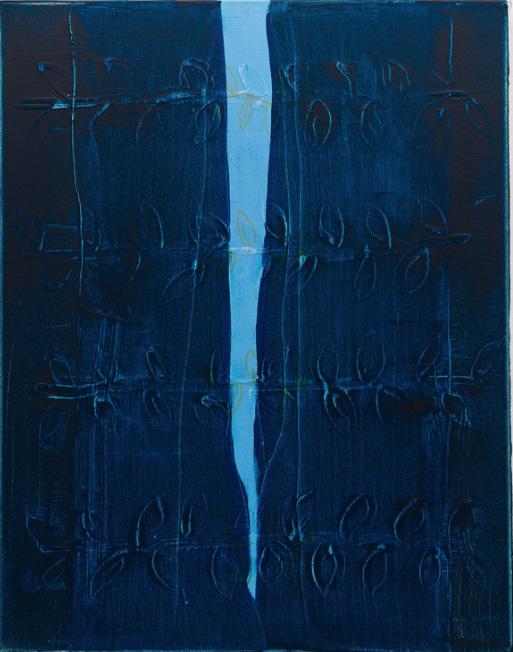
8 minute read
Ann Hamilton
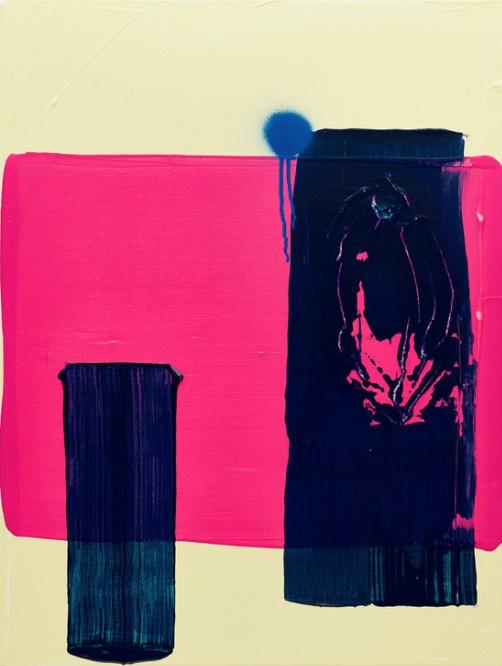
Melanie Reese, Healer II, Sexuality IV, Slave II, Mixed media on canvas, 2016.
Advertisement
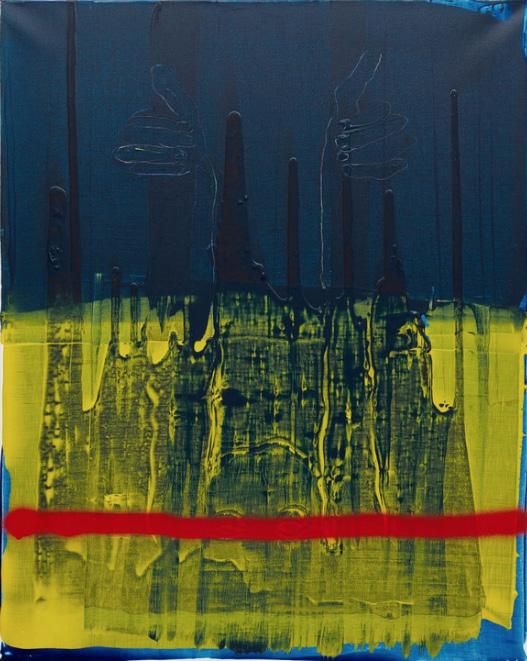
Melanie Reese
By Jacqueline Kok and Jasa McKenzie
JK and JM: Will you please explain the concept behind the series Caliban and the Witch and how you came to be inspired by it?
MR: Each painting is inspired by a single word from Sylvia Federici’s Caliban and the Witch. This book explores the way certain choice words such as healer, slave, rebel, and sexuality have been used since the Middle Ages to condemn women and position them as second-class citizens. It was through a systematic oppression that women were labeled as witches and ultimately feared, tortured and murdered. Using this historically-loaded vocabulary as a starting point, I then visually reinterpret these terms in order to explore how they relate to women today. Through paint, I build my own vocabulary for discussing how such oppression can be understood, reinterpreted, and ultimately overcome.
JM: How did working with specific vocabulary change how you approached language after working on this series? In turn, has that affected the rest of your work at large?
MR:This series is not actually the first time I have been inspired by text and words. In past projects I have been intrigued by the 17th century text The Midwives Book by Jane Sharp. Sharp was the first female midwife in European culture to actually publish a text on midwifery––prior to her it was only men who published on midwifing… shocking and yet also not at all surprising. I was incredibly inspired by the beautifully poetic terminology she would use to reference female genitalia, which seems to be in deep contrast to the vocabulary we chose to use today. “At the bottom of the woman’s belly, there is a mountain of pleasure near the well-spring.” It was out of this series that I began my fascination with how choice words can inspire either an affection for or a deep fear of women and their bodies.
JM: You created this series in 2016, during the election year. Had the social and political situation seeped its way into your thought process and making of the work? How do you see it reflectively in 2017?
MR: I created Caliban and the Witch in the fall of 2016, which was precisely the culmination of our intense election season. It was an inspiring time as a woman because of Hillary’s historic run, but it was also an increasingly disturbing period. Watching what Trump and the right, even the middle right, were doing to Hillary and her campaign was like watching a modern day witch-hunt. The parallels between the research I was doing and what I was watching happen to Hillary were, for me, indisputable. If a woman as overly qualified as Hillary can be torn down and berated with such intense hatred, it seemed to me that it was an indication of the socio-political view of how every woman may be treated in this country. This inspired me to continuing churning out paintings—it proved that the parallels between the history of witch-hunts and the modern day American woman I was exploring in my work was extremely relevant. Now that we are fully immersed in the disaster that is the Trump presidency, I am even more disturbed by the accuracy of my Caliban and the Witch series. Do we really hate and fear women so much that we are willing to elect a fool like Donald Trump as our president?
JK: Your background was originally in figurative drawing and these are clearly a departure from your roots. What prompted you to make such a drastic change in your practice?
MR: The transition happened rather smoothly. I had reached a point in my figurative practice where I was feeling stuck. When a figure is involved, the conversation can often end before it’s even begun—people bring their own assumptions, experiences, and readings to any work, but especially to figurative work. I was overthinking every decision concerning the figure and it was stunting my practice. As an exercise, I began to focus on the individual aspects of the figure. I zoomed in, abstracting parts of the body. I began to focus strictly on color, line, texture, mood, etc… the act of painting rather than the figure. It was a natural leap to abstraction from that point. I began to play and have fun again with my practice. I was challenged and inspired by the idea of attempting to have the same conversation I was having in my figurative work with these new abstract paintings. Through abstraction I am able to open up the dialogue and reach a far greater range of people because the subject is what drives the paintings rather than the figure or the painting itself.
JK: Our exhibition is titled, The Map Is Not the Territory, or in other words, the word is not the thing. Abstraction in painting, much like in language, invites a multiplicity of perspectives and interpretations. How do you feel the series Caliban and the Witch exemplifies the show’s theme?
MR: Caliban and the Witch is a series which exists purely as a means of exploring the multiplicity of the meanings of language and the ways in which it is expressed in painting. Each painting is an exploration of the ways vocabulary is used to express several different interpretations in a single word or painting. My paintings are simply suggestions of how we understand today the words which were used to oppress and murder women in the 15th-18th century. These words are still being used today, but within a different cultural context and our relationship with these terms has changed. I argue that our history informs our present and with the conversations my work inspires, we can perhaps better understand our present. The Map Is Not the Territory expresses a sense of exploring beyond what we are expected to believe is true. If we are to truly understand our current social, political, economic, and ecological state, it is up to us to push past our cultural borders and create our own human territory.
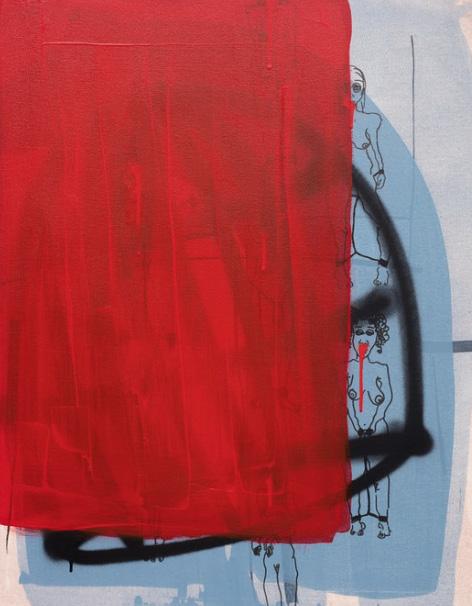
Melanie Reese, Rebel I, Mixed media on canvas, 2016.
Roberto Vega
By Natalia Viera Salgado with Roberto Vega
On Cracks as Metaphors: Studies on Fissures
For Ecuadorian artist Roberto Vega, cracks can provide an alternative space for reflection, representing an open pathway to history. At the Pfizer building in Brooklyn, the artist connects his drawings to already-existing cracks in the space, enhancing them instead of fixing them. Studies on Fissures, 2017, which Vega creates for the exhibition The Map Is Not the Territory, presents a site specific work accompanied by a collection of ink drawings and a selection of objects and photographs, that explore how the crack can open up possibilities for such reflection. The photos are embedded within sculptural objects made out of plaster, sometimes obscuring the identity of the subject, and sometimes allowing the faces to peek through. These represent a personal archive that Vega accumulated while walking around New York over the past year and combining it with his personal memories from his homeland. In a sense the archive is cracked open, exposing a personal past. These cracks are what Vega calls “a reflection on the inscriptions of time.” In order to open up spaces of memory, this work uses his personal writing, archival material, and poetry, as one of his primary inspirations. Poetry, unlike more structured literature, is in many ways a broken form, with cracks in its content. For example the caesura, which means in greek a break in the verse. In this case, the poetic notion of “imaginary lands,” brings individuals to consider their personal ideas about territory, and how these ideas may conflict with the dominant standard.
In [Imaginary Lands], Vega uses a poetic phrase from his earlier work that is loaded with questions concerning to the realities of land ownership and its borders. Vega has been investigating the idea of memory for five years now. Before coming to New York, he worked with domestic archives while digging into the story of his family and ancestors. Vega creates a reality that allows for him to reflect on memory and question preconceived notions in order to rethink those stories. The concept of memory and time can be a very fragile one, he explains it by introducing personal lived experiences in Ecuador: “The country where I was born and raised carries a story full of scars and losses. We lost languages and territories. In 1999, we lost our currency and adopted one from abroad. I believe that Ecuador has a past that, viewed from the lenses of success, is fraught with failures. But it may be that in our fissures and weaknesses we find a space where the creation of a dialogue is possible. Surely this exercise is also an attempt to work from my own scars and my own failures and how, from them, I can propose something and keep on.” Instead of viewing the fissure as a weakness, Vega makes the crack powerfully visible, focusing on its strength. For Vega, we come closer to the collective truth when we study the discontinuity of the present; we take charge of moments of instability and turbulence. Interventions and marks serve as affirmations that we are present in a certain space at a certain moment. Vega also works with the footprint (or imprint) of the crack, as he feels that it can serve as a metaphor for our time; it is a way to expose physical, concrete forces, as well as external forces that are beyond our control. This fissure serves as a metaphor, as an impertinence in the habitual register of language and, therefore, the creation of a possibility. The crack serves in a way as a “spatial reality” for knowledge and truth. “The spaces and territories that we inhabit are regulated. Many times the rules that build them are unknown to us. Mapping the space allows us to read and understand it from another point of view. By naming space we can speak with our voice, using our own words. Re-naming and re-configuring space becomes an exercise of freedom, autonomy.” When thinking about the fissure and how one can connect to the world, Vega adds ,“perhaps, through the cracks of power we can look out and recover our voice.”
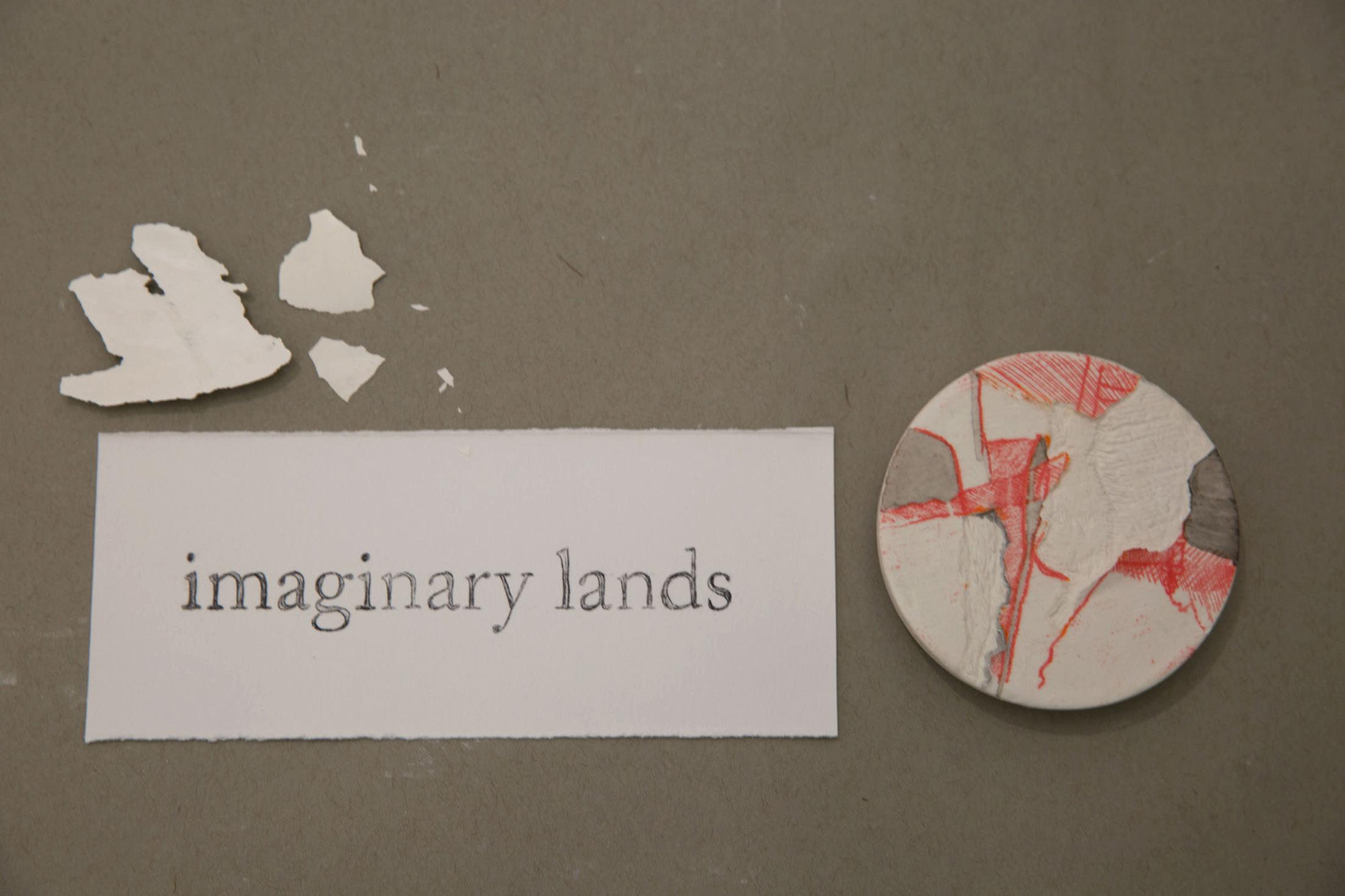
Roberto Vega, [Imaginary Lands] (Left) and Personal Poetry (Right), Personal writing, archival material, objects, and their debris, 2017.
